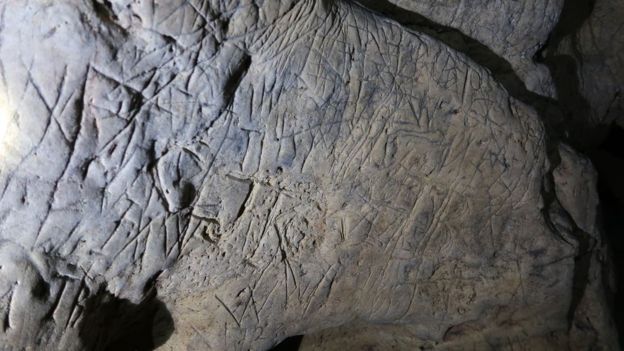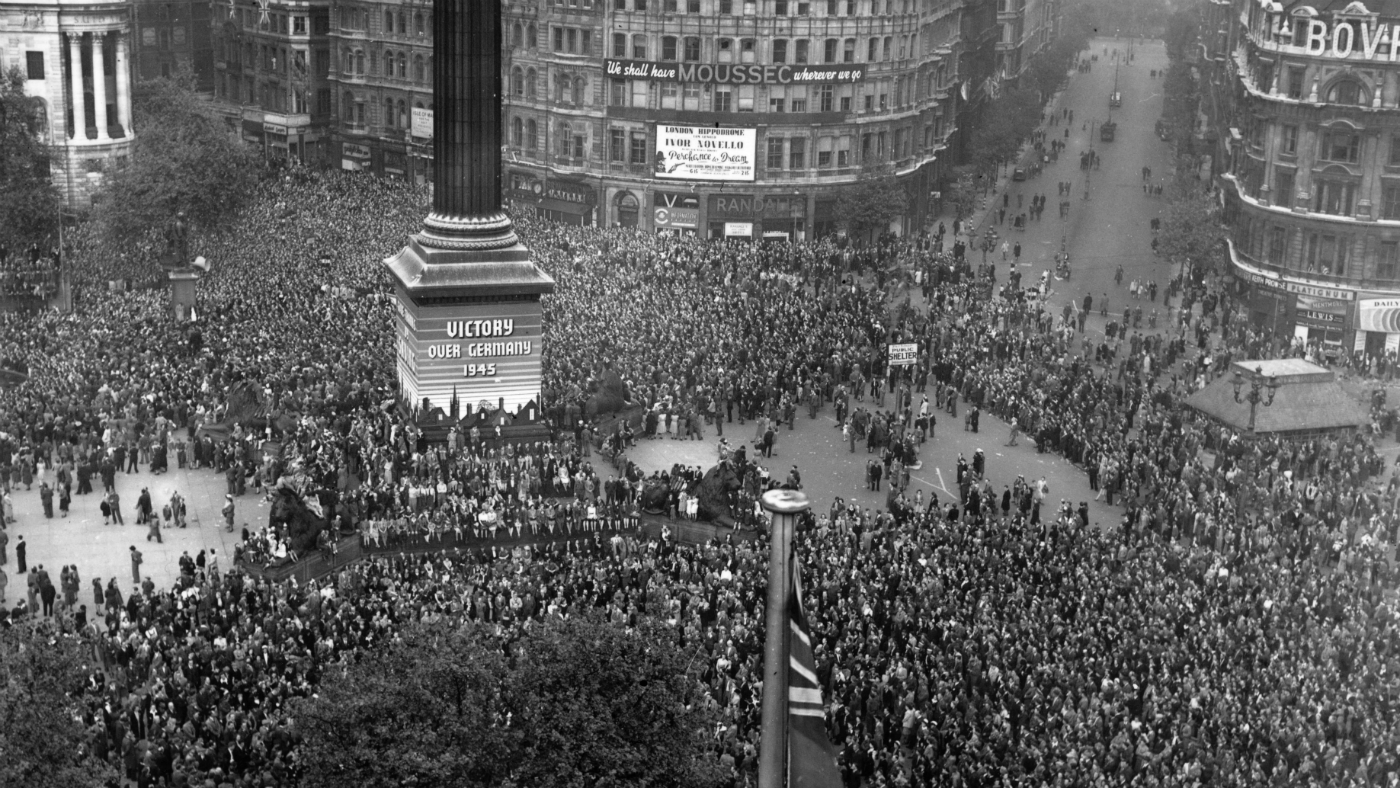Mystery of Nottinghamshire ‘witch cave’
Cave carvings initially thought to be graffiti now believed to be UK’s biggest collection of ‘apotropaic’ signs

Hundreds of “witches’ marks” believed to date from the 17th and 18th centuries have been found in a network of caves in Nottinghamshire.
Until recently the carvings at Creswell Crags, a limestone gorge on the Derbyshire-Nottinghamshire border, were thought to be graffiti from the Victorian era.
However, “a chance encounter shortly before Halloween last year has led to a complete reevaluation of the site”, says The Daily Telegraph.
The Week
Escape your echo chamber. Get the facts behind the news, plus analysis from multiple perspectives.

Sign up for The Week's Free Newsletters
From our morning news briefing to a weekly Good News Newsletter, get the best of The Week delivered directly to your inbox.
From our morning news briefing to a weekly Good News Newsletter, get the best of The Week delivered directly to your inbox.
Keen-eyed caving enthusiasts Hayley Clark and Ed Waters were taking a guided tour in October “when they spotted the distinctive shape of two ‘V’s crossed, representing the phrase ‘Virgin of Virgins’, a plea to Mary for help in times of trouble”, the newspaper reports.
Following in-depth inspections, experts now believe the markings are “the work of locals who once believed the ominous deep openings were a gateway to the underworld”, and are an “apparent attempt to keep devils, witches and other evil occupants from spilling out”, according to The Independent.
The Guardian says that the carvings represent a “remarkable frenzy” of protective symbols, adding: “Everywhere you point a torch there are overlapping Vs, a reference to Mary, virgin of virgins. There are also PMs, as in Pace Maria, and crossed Is, referring to Jesus on a cross, and odd-shaped As.”
These carvings are known as apotropaic marks, deriving from the Greek word apotrepein, meaning “to turn away”. They are “most commonly found in historic churches and houses, near entrance points like doorways, windows and fireplaces to protect inhabitants from evil spirits”, reports regional news site Nottinghamshire Live.
A free daily email with the biggest news stories of the day – and the best features from TheWeek.com
“These marks were either to keep something in, or to keep something out,” said Paul Baker, director at Creswell Crags Museum and Heritage Centre. “I think over a period of time this hole was blamed or associated with a series of events, illnesses or crop failures to the point in which they hoped the marks would protect them.”
Alison Fearn, a University of Leicester expert on protective marks, said: “I cannot emphasise how important this corpus of apotropaia is to graffiti research.
“I think off the top of my head, it is the largest number of examples found anywhere and in any context in the UK.”
-
 Windrush activist lists ‘100 great black Britons’
Windrush activist lists ‘100 great black Britons’Speed Read The Black History Month project celebrates individuals who collectively span the past 400 years
-
 BLM: almost 100 National Trust properties linked to slavery and colonialism
BLM: almost 100 National Trust properties linked to slavery and colonialismSpeed Read Review reveals ‘uncomfortable truths’ behind homes owned by famous figures including Winston Churchill and Rudyard Kipling
-
 Archaeologists map Roman city using ‘quad bike and radar’
Archaeologists map Roman city using ‘quad bike and radar’Speed Read New scanning system reveals ‘elaborate’ details of ancient settlement
-
 Iron Age coins: how record-breaking £10m hoard was discovered
Iron Age coins: how record-breaking £10m hoard was discoveredSpeed Read Two amateur treasures hunters handed Guinness World Records title after unearthing pre-Christian haul on Jersey
-
 Why May Day bank holiday is set to move in 2020
Why May Day bank holiday is set to move in 2020Speed Read Government considering switching date in order to mark VE Day anniversary
-
 Matthew Flinders: explorer’s grave discovered in London
Matthew Flinders: explorer’s grave discovered in LondonSpeed Read HS2 dig unearths lost remains of celebrated navigator more than 200 years after he put Australia on the map
-
 Thames archaeologists uncover skeleton in medieval ‘wellies’
Thames archaeologists uncover skeleton in medieval ‘wellies’Speed Read Discovery of 500-year-old body in leather waders hailed as ‘extremely rare’
-
 Graffiti in Pompeii set to rewrite history books
Graffiti in Pompeii set to rewrite history booksSpeed Read Eruption of Mount Vesuvius may have occurred months after initially thought

